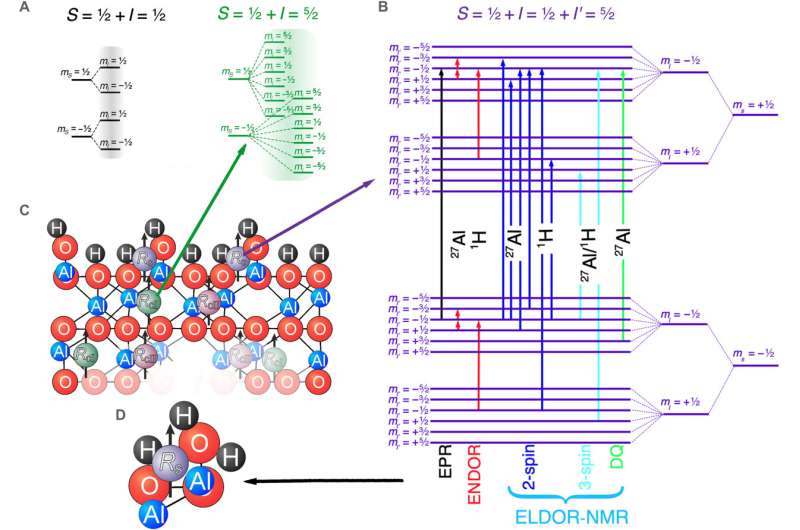
NPL scientists, in collaboration
with experts in physical chemistry, have unleashed state-of-the-art electron
paramagnetic resonance (EPR) techniques to understand materials relevant for
superconducting quantum circuits, with results published in a recent paper
in Science Advances.
Superconducting quantum computers have rapidly increased in size and complexity in recent years and the focus is now towards demonstrating fault-tolerant error-corrected quantum computing. Progress is currently held back by a relatively short coherence time and state fidelity of qubits. These obstacles are largely attributed to atomic-scale material defects interacting with the qubits. The origin of these defects is notoriously difficult to explore because of their quantum nature: They only reveal themselves at the energy scales and conditions relevant for the qubits themselves and are so far largely inaccessible by techniques available to material scientists.
By utilizing the inherent high resolution provided by high magnetic field EPR, in combination with nuclear spectroscopy techniques, the team were able to study a specific surface radical on Al2O3 (a material present in all modern superconducting quantum processors) in detail.
The study revealed a complex structure of the radical: an electron coupling to multiple Al atoms in the Al2O3 lattice as well as many separate hydrogen nuclei. This in turn allowed to specifically attribute this radical to a surface defect. This is the first experimental work that is able to reveal the exact structure and insights into the formation chemistry of such surface defects that are linked to causing decoherence in superconducting quantum circuits.
Now, once we know the detailed properties of this defect, we can start to think about ways to silence it. Here silencing, as opposed to elimination, appears to be the most viable route for future devices with higher coherence, as this particular defect is now understood to be intrinsic to the chemistry naturally occurring at device surfaces.
The study presents an important advance in the field of materials for quantum circuits as it offers one of the first direct routes to chemical and structural identification of defects. So far, the field has relied heavily on materials science operating at entirely different energy scales and defect concentrations. These techniques can reveal imperfections but lack the ability to expose a direct link to defects that appear and interact with the quantum circuits themselves. We are therefore in urgent need for new materials science that can understand defects as and where they appear in quantum circuits without having to perform elaborate, and often inconclusive, correlation studies between materials, fabrication processes and device performance. The method presented in this study provides one of the first direct routes around this issue.
Sebastian de Graaf, senior research scientist, NPL said: "We are hopeful that our work will motivate material scientists and chemists around the world to apply and refine similar techniques to study the materials used in solid state quantum circuits. We can now, in a straight-forward way, investigate the impact of a wide range of chemical treatments with the goal of finding a process that reduces the amount of defects detected."

 Previous page
Previous page Back to top
Back to top







